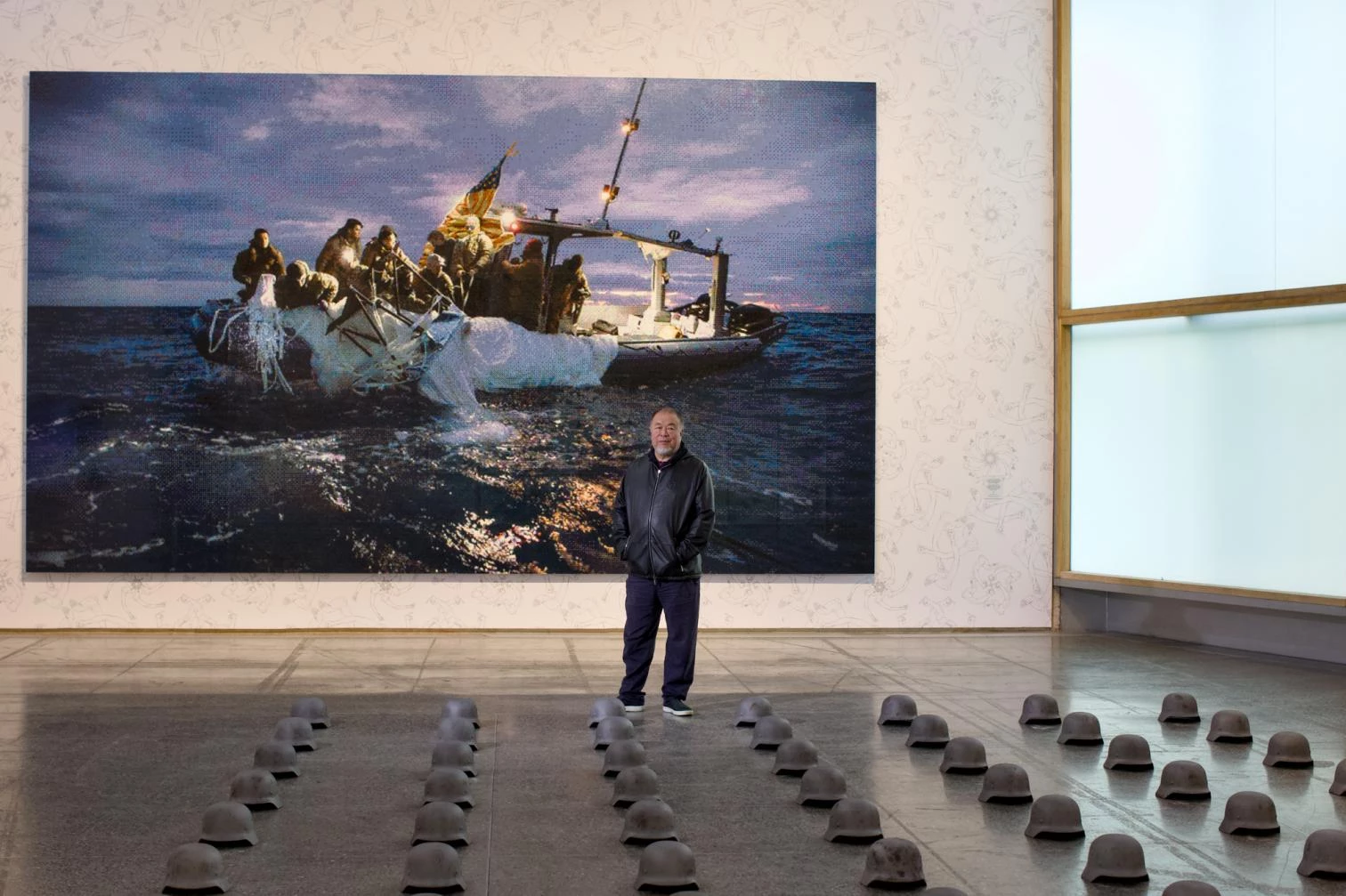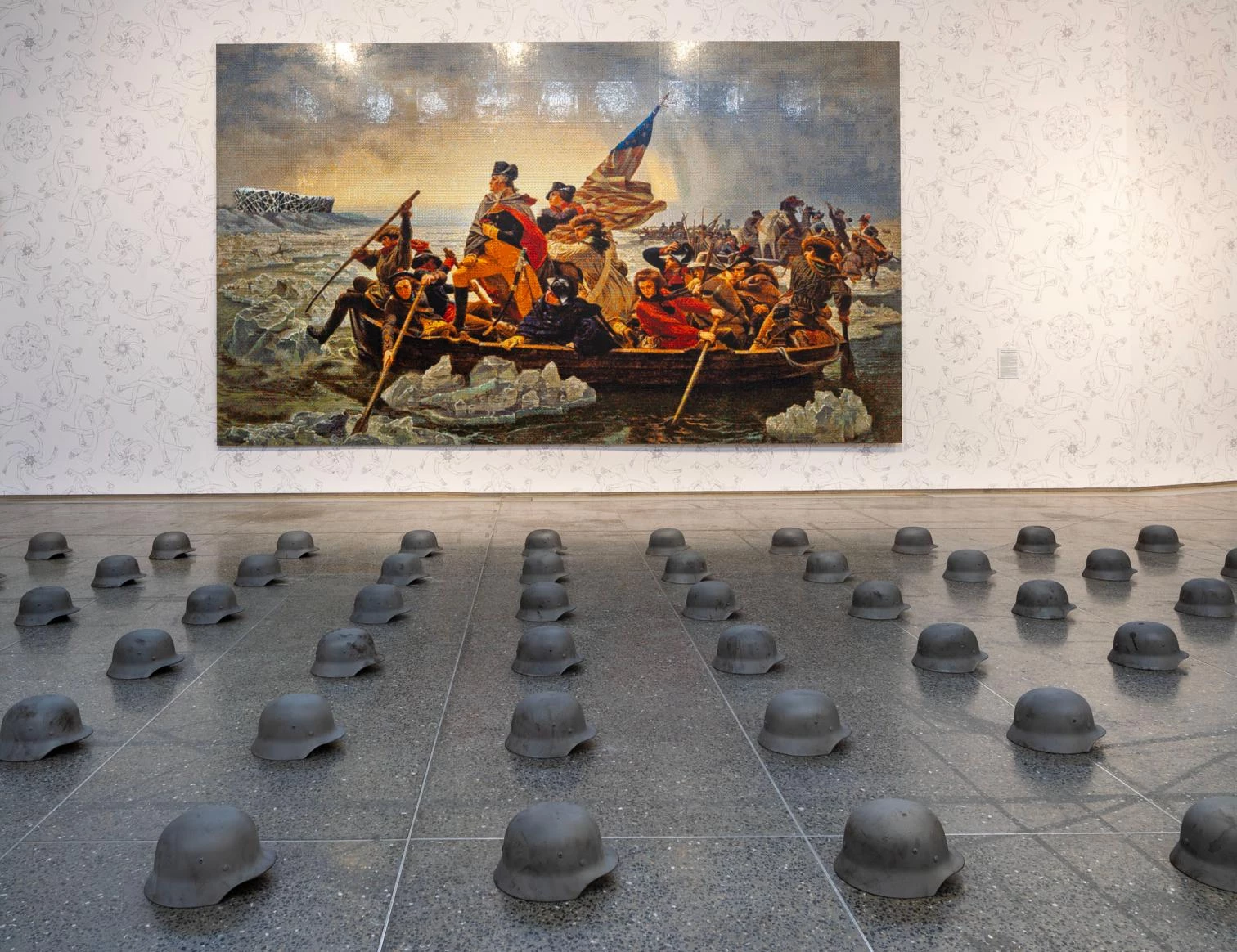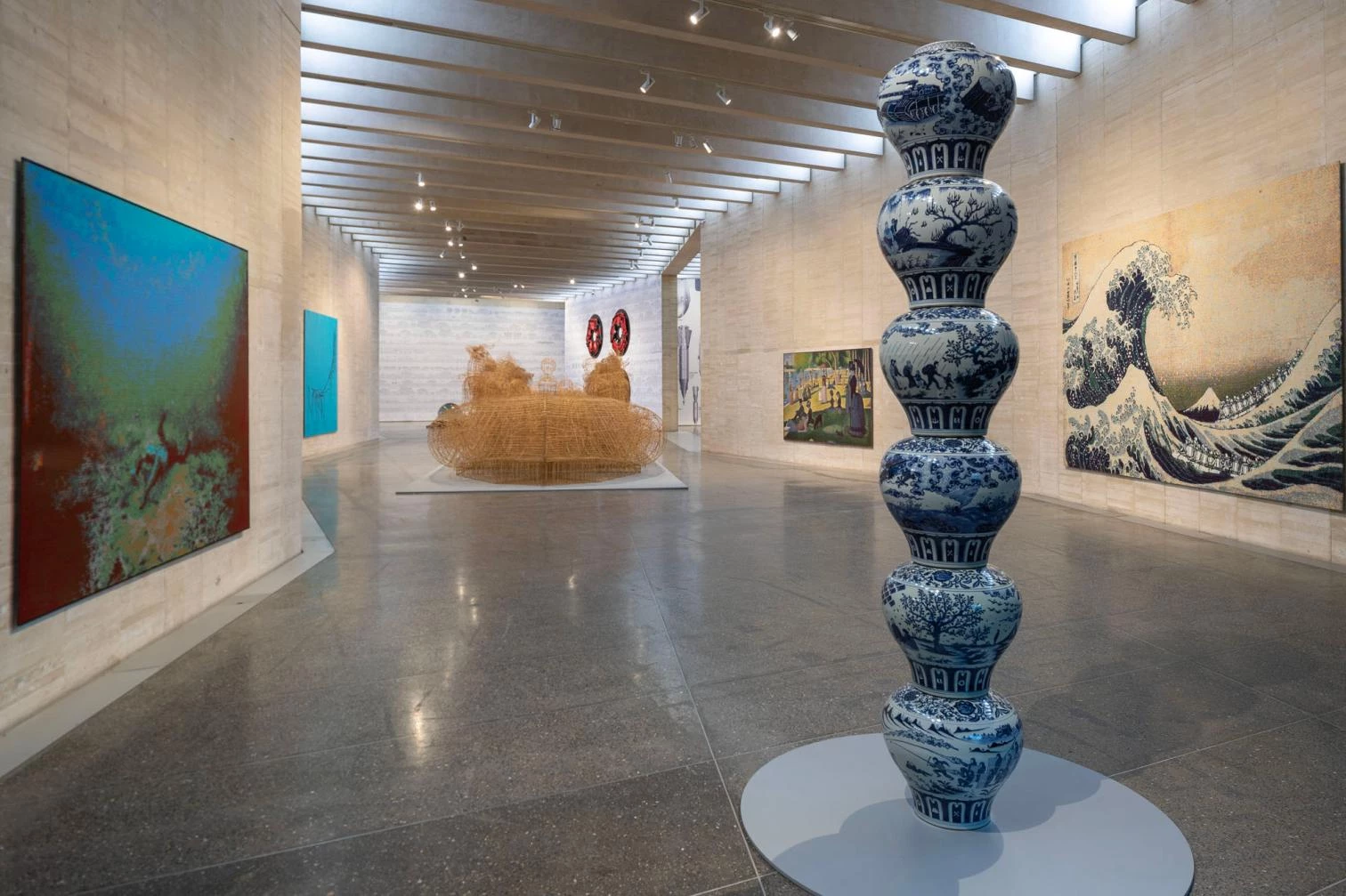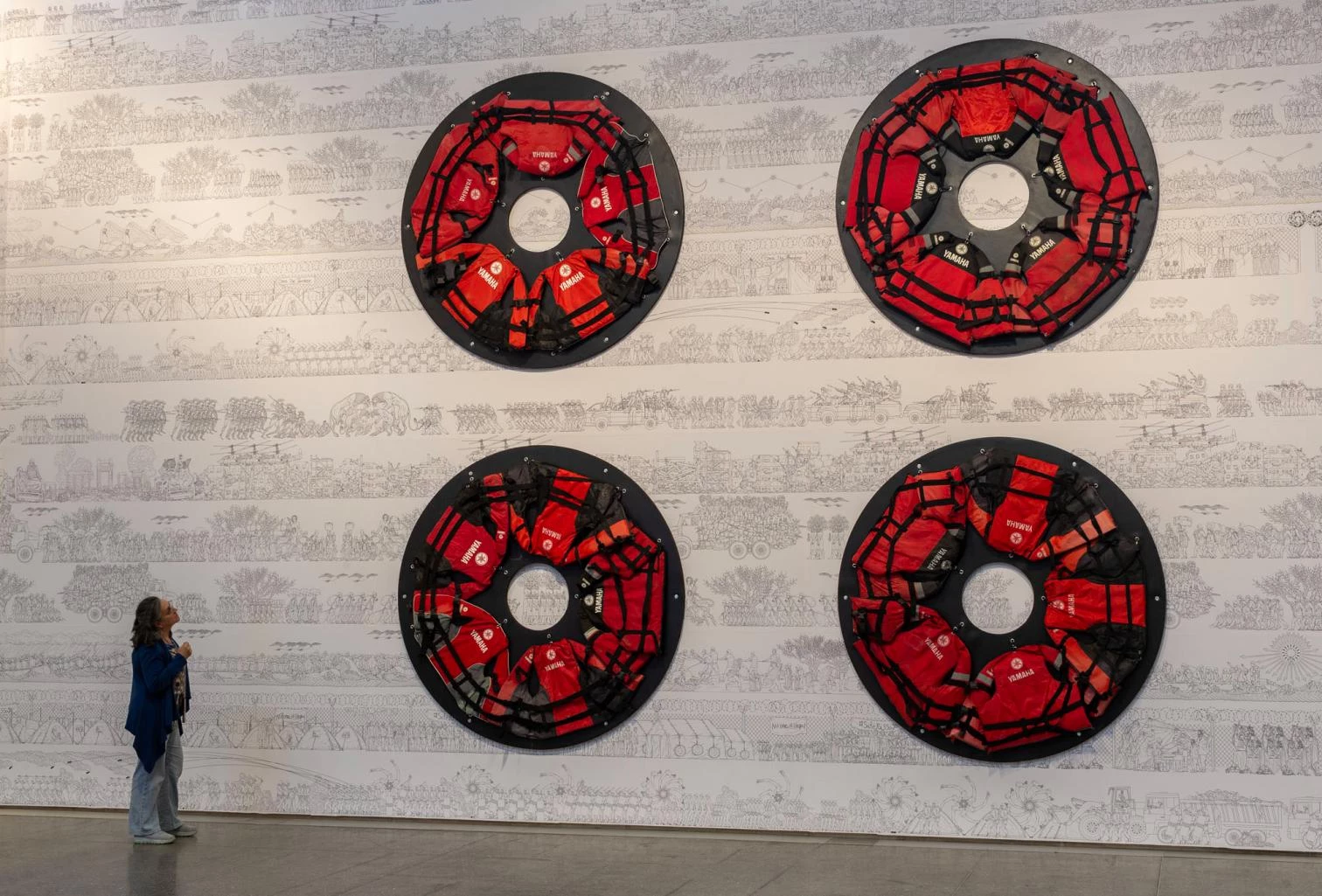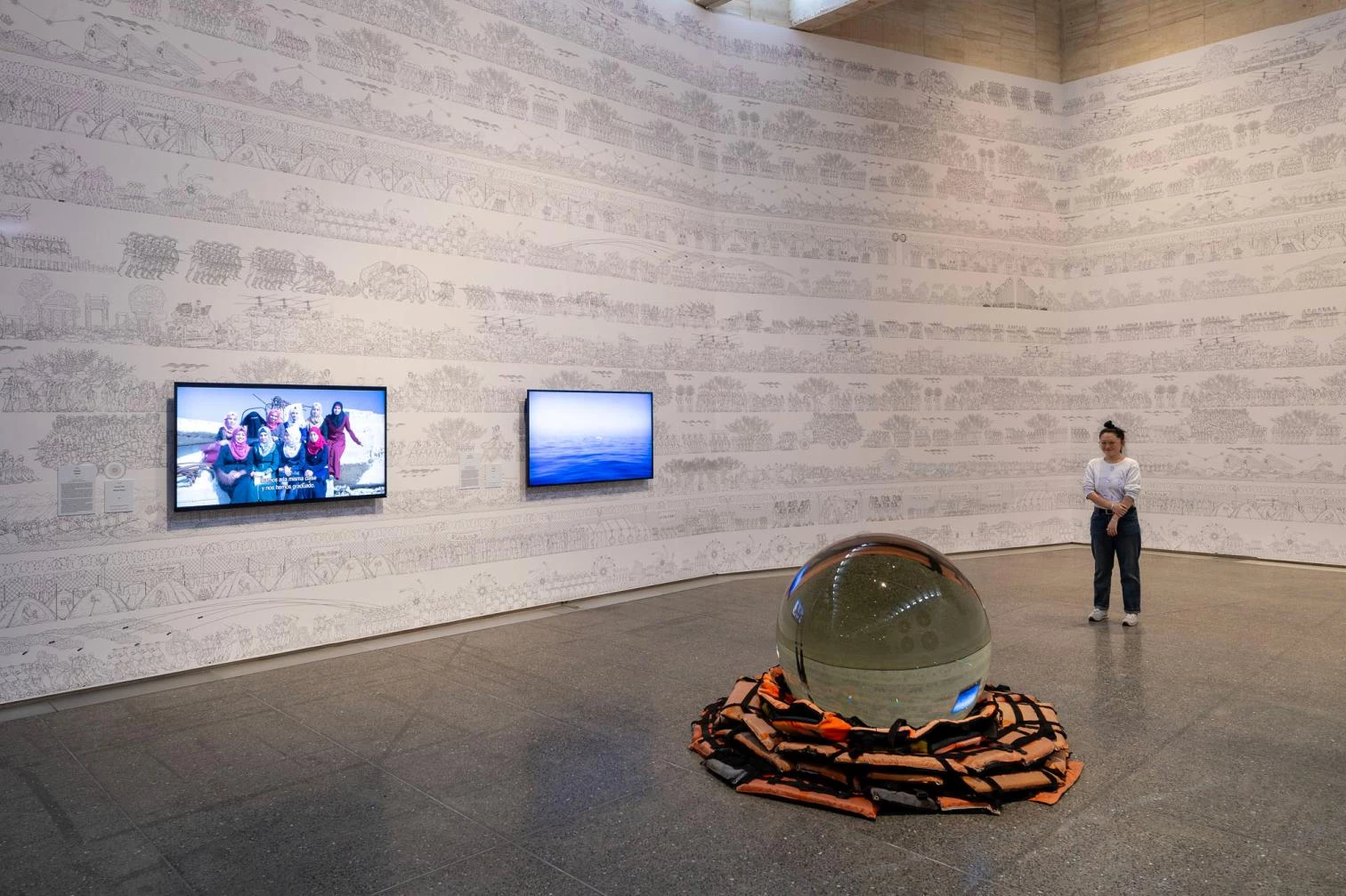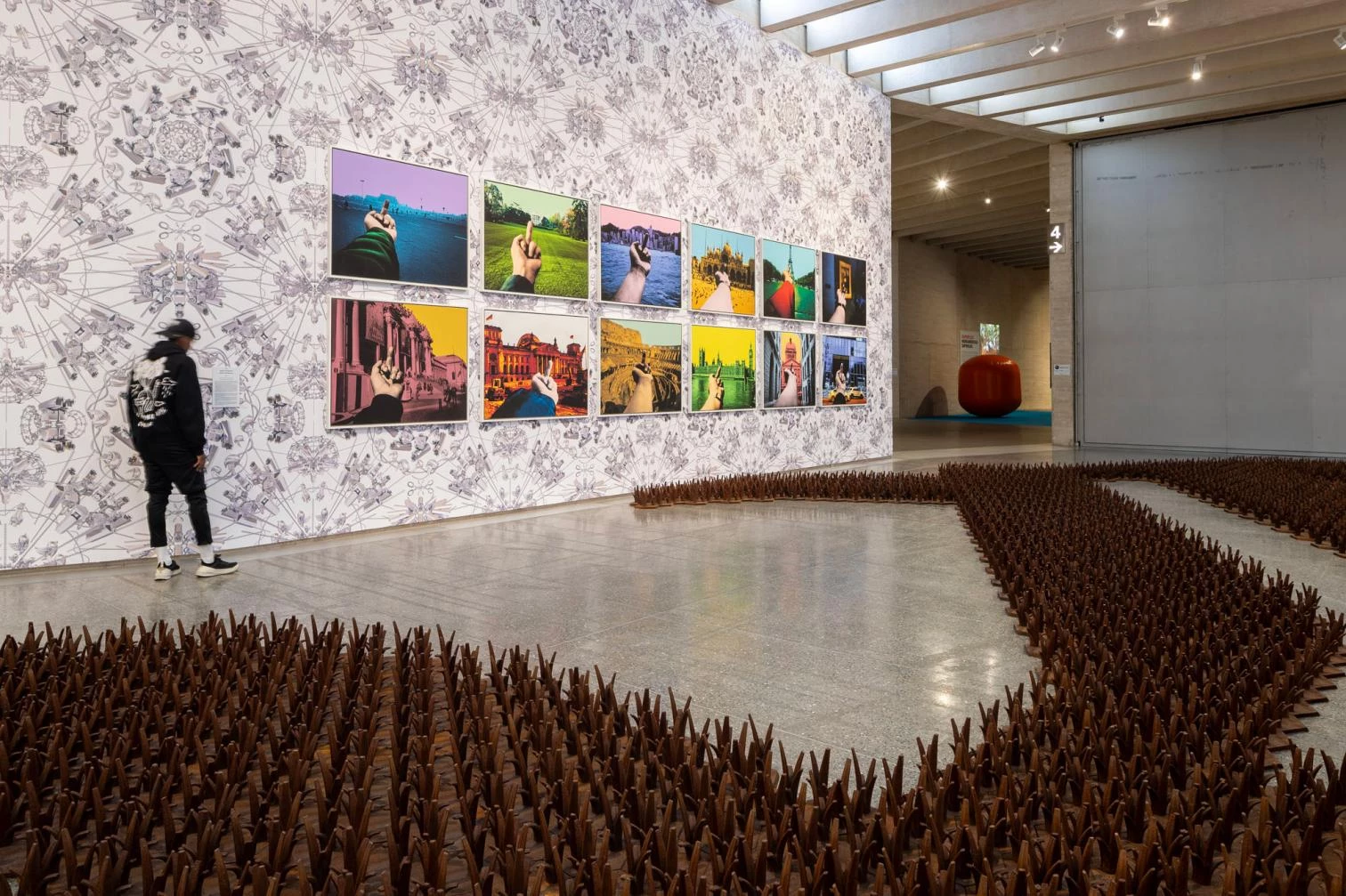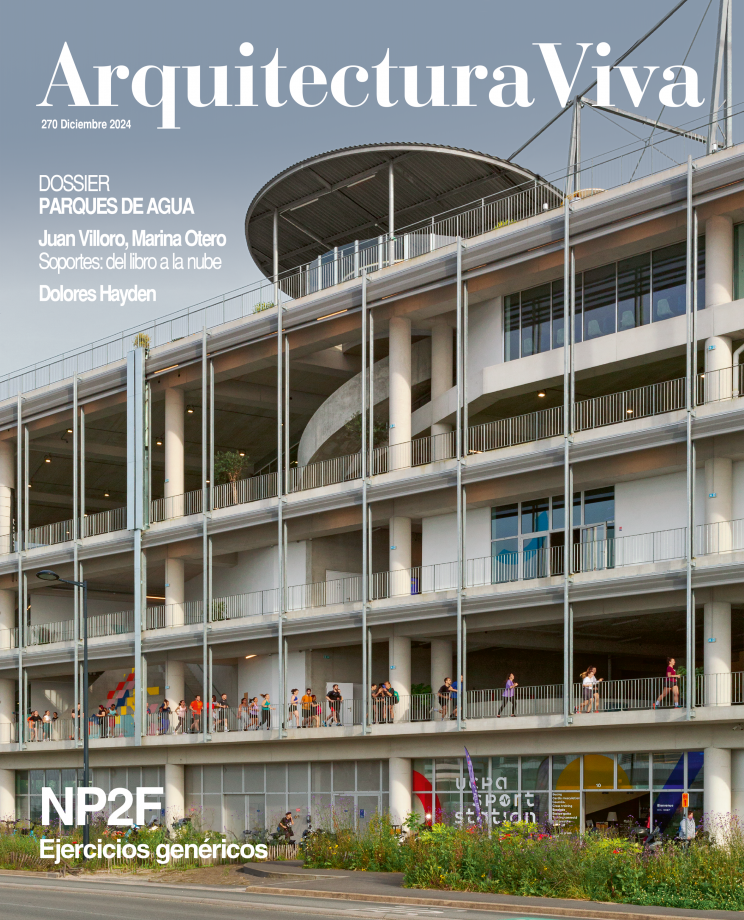
Images courtesy of MUSAC
Taking up 1,700 square meters, this exhibition of 44 works by the Chinese artist and activist Ai Weiwei (Beihing, 1957) opened on 9 November at MUSAC in León, to run until 18 May 2025. ‘Ai Weiwei: Don Quixote’ shows creations of the past twenty years (large installations, a selection of works crafted with LEGO or WOMA building blocks, and films) that tackle themes like freedom of expression, the migrant crisis, and the defense of human rights.
To explain the exhibition title, one has to go back to Ai Weiwei’s childhood. His father, the poet Ai Quing, had among his books an edition of Cervantes’s masterpiece, the beautiful cover and illustrations of which the artist fondly remembers, along with the brief introduction to the story that his father gave him. The larger-than-life tandem formed by Don Quixote and Sancho Panza stimulated the child’s imagination, stretching it way beyond the Maoist doctrine that required everything to go by strict logic and reason.
Curated by MUSAC director Álvaro Rodríguez Fominaya, the montage was with the artist’s collaboration designed exclusively for the the Museum of Contemporary Art of Castile and León. It will not be shown elsewhere. The exhibition’s size makes it a standout. It was conceived specially for MUSAC’s galleries, the scales of which enable them to showcase Ai Weiwei’s monumental works.
Besides ten samples of Ai Weiwei’s oeuvre in film and videoart, the show includes works crafted with LEGO pieces, where the artist audaciously challenges traditional two-dimensional painting. In his own words, the toy bricks are for him “the perfect tool to question the political and aesthetic past of art.” Through LEGO building blocks the artist comes up with versions of masterpieces in the history of art, such as The Third of May (2023), never seen before, which was made specifically for this exhibition, a take on Goya’s El tres de mayo en Madrid. There are also images taken from the media, which are references to geopolitical and humanitarian crises of today, and works referring to other pieces by Ai Weiwei himself, rendered with other techniques.


